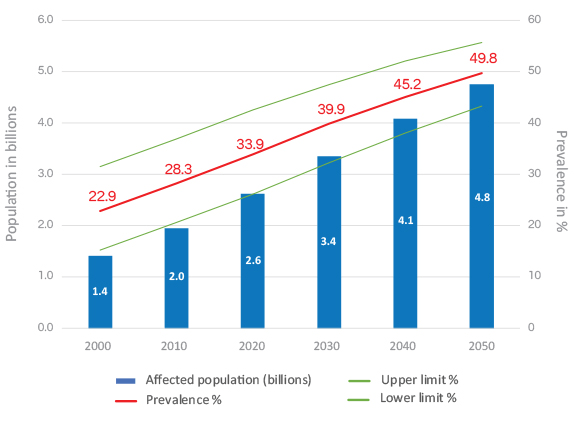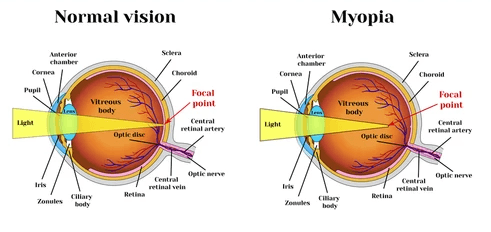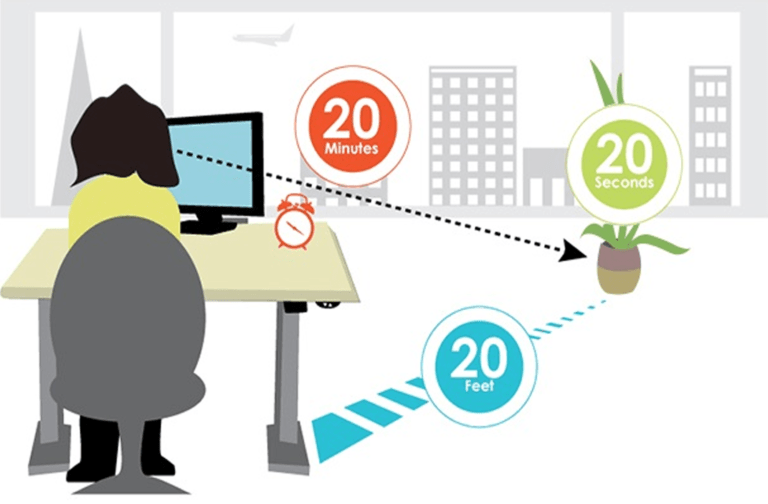Nowadays most children are quite smart mostly due to the widespread usage of smartphones. The parents of the present age are often found dependent on feeding their children or keeping them busy so they can finish their regular chores.
Disaster strikes after the children are admitted to the school. When the children start complaining about not seeing things at a distance clearly, the guardians may not pay attention in the initial stage. However, they later seek a doctor’s advice.
As per World Health Organization (WHO) report, at least 2.2 billion people worldwide suffer from a near- or distance vision impairment. Nearly half of these cases, or at least 1 billion, involved vision damage that either might have been avoided or is still unaddressed.
Based on the International Agency for the Prevention of Blindness (IAPB), 4.64 percent of the Bangladeshi population have moderate to severe vision impairment. Though there are no statistics on the number of affected children, it can be assumed the number will not be low, especially after entering any school compound, which often seems like a spectacle factory.
Amongst all the eye disorders, myopia or nearsightedness is most common among children. According to International Myopia Institute, on average, 30 percent of the world is currently myopic and by 2050, almost 50 percent will be myopic. The hot spots of myopia are East and South East Asia where countries such as South Korea, Taiwan, Singapore, China, and Japan have a prevalence of myopia of 80 to 90 percent.


Nearsightedness develops when the cornea (the clear front layer of the eye) or lens back (an inner part of the eye that helps the eye focus) are shaped improperly, or when the eyeball grows too long from front to back. Due to these issues, light focuses in front of the retina rather than on it, which causes distant things to appear hazy.

Myopia can cause some other critical diseases as well like chronic pathologic visual changes that include retinal detachment, myopic macular degeneration, glaucoma, amblyopia, and early-onset cataract. The prevalence of myopia frequently varies by age, nation, sex, race, ethnicity, occupation, environment, and other factors.
-
Age: Usually children are more susceptible to myopia.
-
Ethnicity: The prevalence of myopia has been reported as high as 70 to 90 percent in some Asian countries, 30 to 40 percent in Europe and the United States, and 10 to 20 percent in Africa. It is less common in black, Nubians, and Sudanese people.
-
Genetics: The tendency to be nearsighted runs through families. Your likelihood of becoming nearsighted is higher if one of your parents is. If both parents have nearsightedness, the chance is increased.
-
Prolonged Close-Up Activities: Prolonged reading or other close-up activities are associated with an increased risk of nearsightedness.
-
Screen Time: Children who use computers or other smart gadgets for extended periods have a higher chance of becoming nearsighted, according to studies.
-
Environmental Conditions: A lack of outdoor activity may raise the chance of developing nearsightedness, according to several research.
For myopia prevention, it is important to conduct eye screening on regular basis. The recommended times for screening are as follows:
-
At least once between ages 3 and 5
-
Before kindergarten, usually age 5 or 6
-
Annually through the age of 20.
-
At least once between the ages of 20 and 29
-
At least twice between the ages of 30 and 39
-
Every 2 to 4 years from ages 40 to 54
-
Every 1 to 3 years from ages 55 to 64
-
Every 1 to 2 years after age 65
You will probably require more frequent eye exams if you have diabetes, a family history of eye illness, high blood pressure, or other risks for heart or vascular disease. Additionally, if you already wear prescription eyewear like glasses or contacts or if you have undergone vision correction surgery, you will probably require more frequent checkups. How frequently you should have exams will be advised by your eye doctor.
Rest your eyes from gadgets or other close-up works every 20 minutes by looking at something 20 feet away for 20 seconds.

Wear prescription glasses or contact lenses. Sometimes refractive surgeries like laser-assisted in situ keratomileuses (LASIK), laser-assisted subepithelial keratectomy (LASEK), photorefractive keratectomy (PRK), and small incision lenticule extraction (SMILE) reduce the need for eyeglasses and contact lenses. Surgery is recommended only when nearsightedness is no longer progressing.
Researchers and clinical professionals are constantly looking for new, more successful ways to stop the progression of nearsightedness in kids and teenagers. Therapies that show the most promise include:
-
When doing eye exams or before and after eye surgery, atropine drops are frequently used to widen the pupil of the eye. Eye drops containing low doses of atropine may also aid in halting the progression of nearsightedness.
-
Spending time outside when you are young, in adolescence, and your early adult years may reduce your risk of being nearsighted.
-
Some evidence suggests that a certain type of dual-focus contact lens can reduce the progression of nearsightedness.
-
The cornea is temporarily reshaped using a rigid contact lens named Orthokeratology that is worn at night. Daytime use of the lens is not permitted. According to studies, this treatment may halt the progression of nearsightedness.



